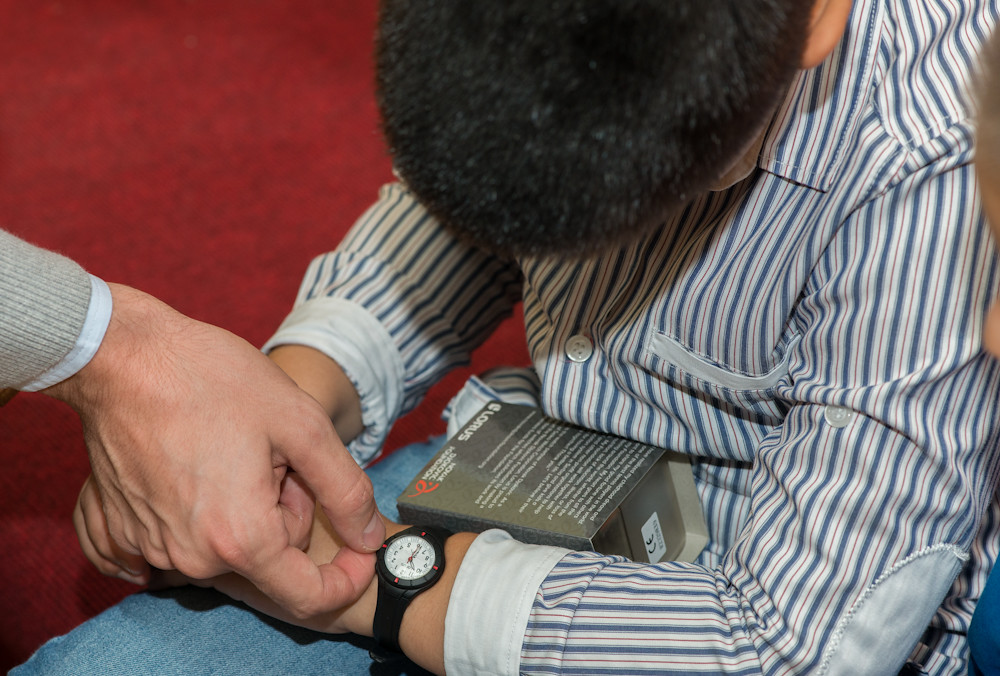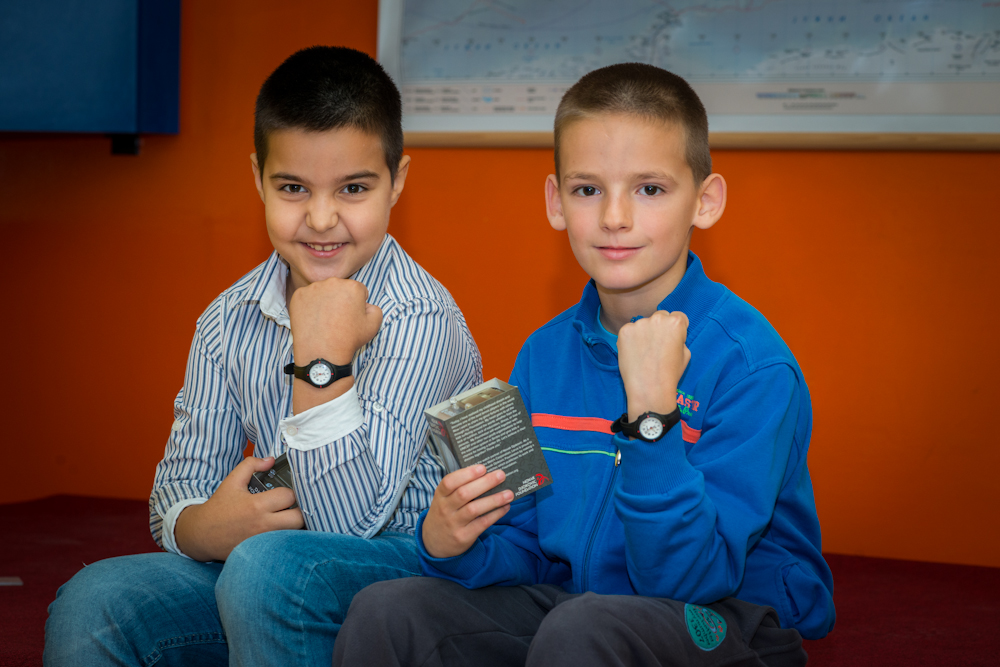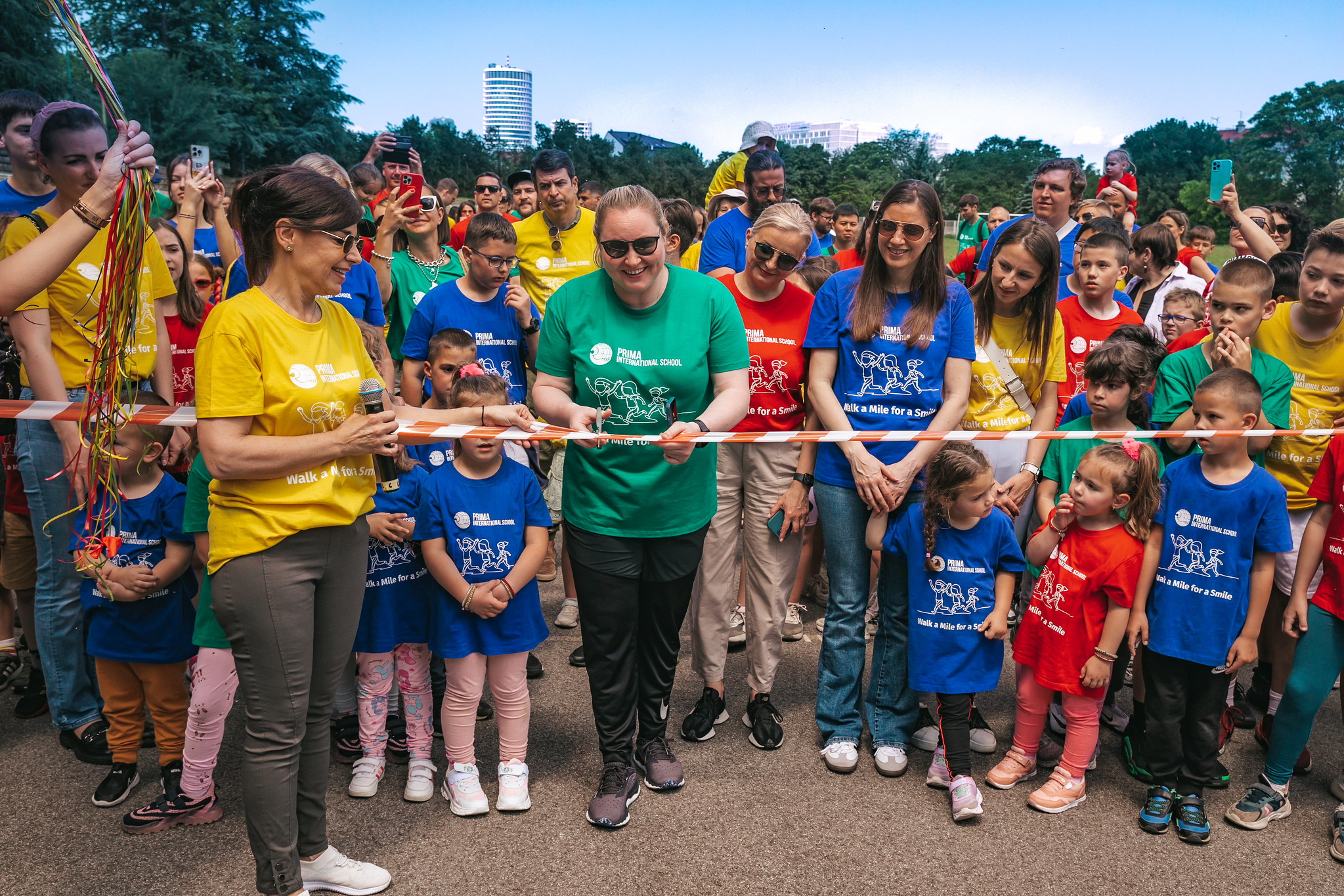Learning how to tell the time can be quite a tricky endeavour for children and takes time and effort to get to grips with but there are some great simple games and activities out there to lend a helping hand and help you to teach them in a fun and engaging way. Here are 7 of the easiest and best teaching aid activities for telling the time.
- Paper watches
This is a fun exercise where children print and cut out free blank watches from a resource craft book. They then draw numbers on the clock face and each student draws hands on the clock to mark a particular time. The students decorate their watch bands and fasten their paper watches to their wrists. Then, with a record sheet each, they will go around the class asking, “What time is it?” of each of their classmates. They will look at their classmate’s watch and record the time depicted on their sheet, until they have collected them all.
- The hula hoop clock
If the sun is out, take your lesson outside and have fun with a clock made of a hula hoop placed on the ground, and some coloured chalks. You can use coloured sticks as the clock’s hands, and the children can have fun helping to design the clock face. Once the clock is ready, you can ask the students to depict various times on their hula hoop clock and test each other on getting them right.
- Musical clocks
Print out blank clock faces from a draft resource book and hand them out to each student. Ask them to draw a time on their clock face, then leave it lying face up on their desk. Make sure each student has a recording chart and a pencil, then start some music and have the students dance around the desks. When the music stops, they must record the time on the clock face on their chart and the name of the person it belongs to. Start the music again and dance once more; the first student to have recorded everybody’s name and time is the winner!

These fun time-telling games and tasks are a great way to teach children the time and have them engaged and motivated.
- I-spy the time
Hide paper clocks with various times recorded on them all around your classroom and ask students to hunt for each clock and make a note of its time on a record sheet. “For even more of a fun challenge,” says Claudia Sonne, a parenting blogger at UK Services Reviews and Revieweal, “write ‘What will the time be in ____ minutes?’ beneath each clock. After students have recorded the time showing on the clock, they must note down the correct future time.
- The paper plate clock
“One of the more tricky aspects of learning how to tell the time is comprehending how the number one equates to five minutes, the 2 to ten minutes – and so on,” says Henrietta Hollis, a psychology writer at UK Top Writers and Best British Essays, “but you can use a paper plate clock with coloured paper markers to show different time periods.” Get students to cut out different coloured wedges of ‘time’ and move them around on the clock face to help them make the connection.
- Recording elapsed time
An interesting and fun activity is to give students a worksheet to take home and ask them to record the amount of time they have spent on various activities like watching television, eating dinner, piano practice, or doing their homework.
- Time bingo
Bingo is always a winner in the classroom! Print off some clock bingo cards and play bingo according to the time skills you are currently teaching – whether that’s minutes, quarter hours, or half-hours.
These fun time-telling games and tasks are a great way to teach children the time and have them engaged and motivated. All easy to set up and execute, and using basic classroom materials, these accessible and simple activities will help your students learn tell the time”¦ in record time!
Rebecca Leigh is a writer on marketing strategy for Do my assignment and Assignment help. She contributes to tech and marketing conferences, is a business consultant, and writes articles for online magazines and blogs like Write my paper.

















